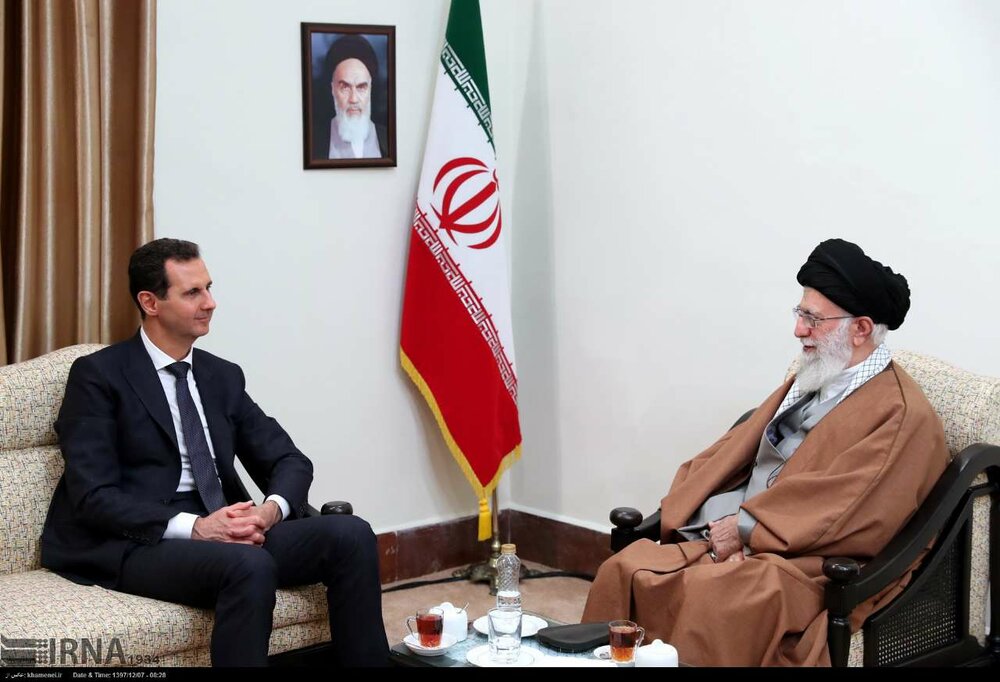TEHRAN - Touching upon Iran’s important role in Syrian victory over Washington’s destructive proxy war, Anthony Cartalucci says Assad’s visit to Tehran is a sign of unwavering Syrian-Iran ties.
Syrian President Bashar Assad made an unannounced visit to Iran, he met with the leader of Islamic Revolution Seyed Ali Khamenei and other top Iranian officials including President Hassan Rouhani to discuss the planned U.S. troop withdrawal and efforts to set up a buffer zone in northern Syria.
Assad’s visit to Tehran was one of his rare trips to abroad since the crisis broke out in the country in 2011.
His visit to Tehran had many clear message. To know more about the issue we discussed President Assad’s visit to Iran with Bangkok- based geopolitical researcher Anthony Cartalucci.
Here is full text of his interview with Tehran Times:
Q: What is the message of his visit to Iran?
A: Syrian President Bashar Al Assad's visit to Iran - the first visit anywhere except for Russia since the war began in 2011 - is highly significant. It is a sign of unwavering Syrian-Iranian ties. It is also a very public message about the central role Iran has played in what is essentially a Syrian victory over Washington's destructive 8 year proxy war. It says that Iran is a regional player - that it played a role in defeating terrorist organizations including Al Nusra and the self-proclaimed Islamic State in ways the nearly 20 year U.S.-led "War on Terror" has categorically failed to do.
Q: What is the significance of Iran and Syria in foiling the U.S. plots in region?
A: This is one of many key setbacks signaling the irreversible decline of Washington's unipolar international order. More specifically, Washington's failure in Syria exposes its declining influence in the region and should have Washington's traditional allies in the region reevaluating their commitments and investments in aiding and abetting U.S. agendas. The U.S.' inability to overthrow Syria after serial regime change wars across the Middle East is a sign of weakness Washington has tried and failed to reverse. It will be important for Syria and Iran to consolidate this victory and ensure the patient, systematic eviction of the U.S. from the region continues without allowing an opportunity for a resurgence of the sort of violence and chaos that swept the region in 2011.
Q: Could the U.S. and its allies reach their goals in Syria?
A: It is likely that as U.S. capabilities degrade in the region, its "goals" will change from achieving hegemony to preserving what little influence it has remaining. It will do this through subversion, terrorism, and interventionism whenever and wherever the weakness or miscalculations of its adversaries allow. The U.S. is still capable of prolonging the Syrian conflict - it is still attempting to shield terrorists from their final reckoning in Idlib and has dragged its feet in withdrawing from eastern Syria - and may possibly never withdraw.
Thus while its initial goal was the complete overthrow, division, and destruction of the Syrian state before moving onward to Iran, the U.S. may still be able to prolong the conflict and leave Syria partially divided. This also serves the purpose of forcing Iran to invest heavily in defense spending that could be better used in protecting and growing its economy in the face of persistent U.S. sanctions and economic warfare. Syria and its allies - especially Iran - still have a long fight ahead of them. The U.S. may have failed in its original plans, but its overall objective of eliminating Iran and its allies still drives its Middle Eastern policy.


No comments:
Post a Comment